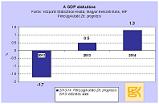Restructuring is defined in this paper as a series of specific actions, aimed at the survival of firms and rescue them from liquidation. In this context, categories of direct state actions, corporate actions or actions implemented through intermediaries will be distinguished, according to the level of decisions and sources of financing. Restructuring will be further classified according to methods, such as organizational or financial, and according to timing, such as before, parallel with or after privatization.
Along these dimensions the most critical dilemmas of restructuring can be outlined. The first question is if restructuring can be or should be implemented before privatization or if it should be rather left to the new owners. The second dilemma concerns the question: who should be responsible and pay for restructuring. Is it sure that these measures have to be taken by the state and if yes, which bodies of the state: the government, the state owned lenders, the organizations representing the state as a shareholder, or any specific restructuring departments? Alternatively, is it possible to establish an environment where the SOEs themselves are willing and able to implement the restructuring process?
In Hungary the initial bottom-up approach was replaced first by centrally controlled privatization when restructuring was overshadowed and then by centrally controlled restructuring. Following a brief review of initial conditions, the paper will present the methods according to the different phases of privatization policy, describing the motivations and methods of organizational and financial restructuring. The last section offers a summary of the pros and cons of the different types of restructuring together with some conclusions.
Paper prepared for the United Nations Economic Commission for Europe, December 1993
Tovább»





